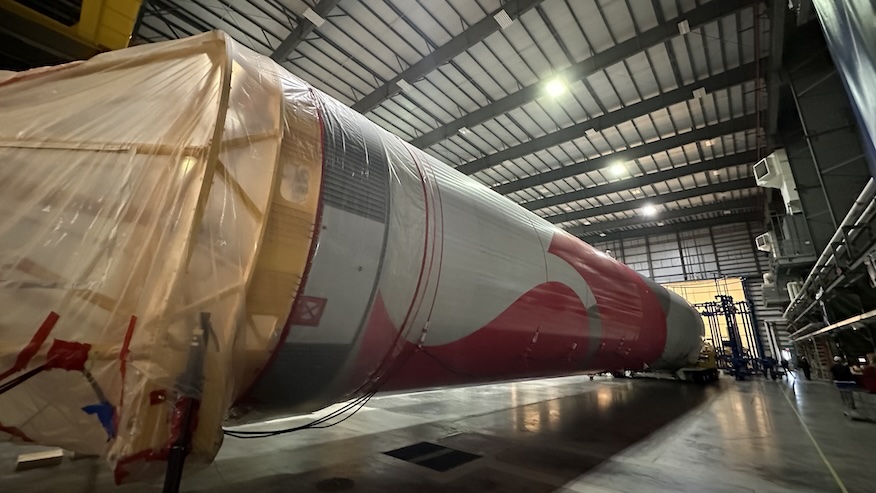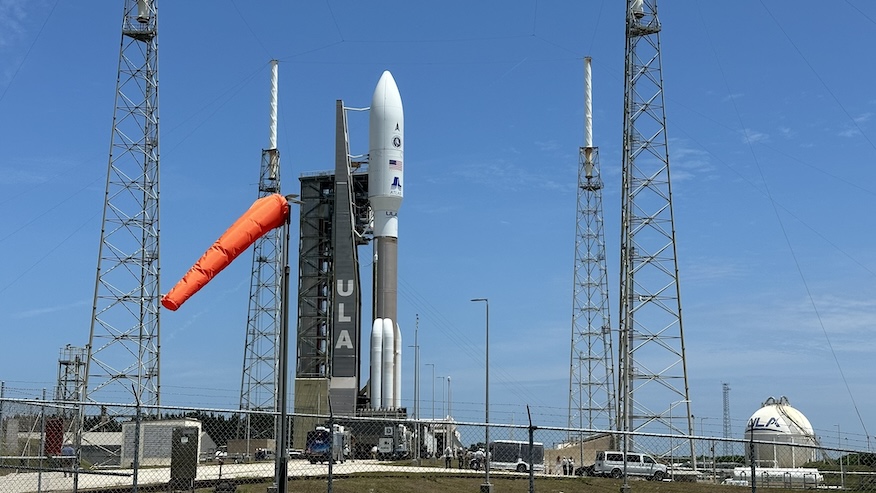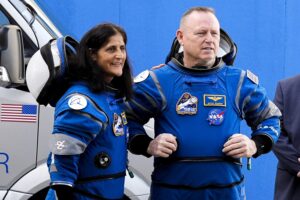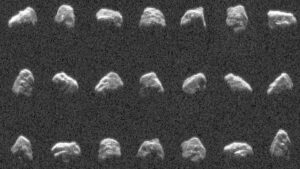United Launch Alliance is preparing for a seminal moment for its Atlas 5 rocket. The launch vehicle is preparing to launch its 58th and final national security mission on Tuesday. United States Space Force Mission-51 (USSF-51) will also be the 100th national security mission launch for ULA.
Following the completion of a launch readiness review on Friday, ULA rolled the rocket to the launch pad at Space Launch Complex 41 (SLC-41) at the Cape Canaveral Space Force station. The first move came shortly after noon on Saturday, with the trip ending after 12:30 p.m. EDT.
Liftoff is targeted for Tuesday, July 30, during a three-hour window that opens at 6:45 a.m. EDT (1045 UTC).
“This is a bittersweet moment for us. I had the privilege of sitting at the console for the first National Security Atlas launch in 2007, STP-1 (Space Test Program 1) in March of that year, and here we are with our latest National Security Atlas,” said Col. Jim Horn, Sr. chief of equipment at Launch Execution Delta. “I want to thank the whole team, the government and ULA. It’s been a strong partnership over the last almost 20 years on this program, and it’s been our workhorse.”
Because of the nature of the launch, Horn declined to go into details about the mission or whether the flight was carrying one payload or more than one.
“I can’t say much about his mission being very important to national security in this time of great power competition, but that’s really all we can say right now,” Horne said.
Atlas 5, which launches the USSF-51 payload, will fly in a 551 configuration, meaning it will be supported by five solid rocket boosters and a short 17-foot (5-meter) diameter payload fairing. The full stack is about 196 feet (59.7 meters) tall.
Gary Wentz, ULA’s vice president for government and commercial programs, said after that mission, of the remaining 15 Atlas 5 rockets that remain, nine will fly in the 551 configuration in support of Amazon’s Project Kuiper constellation.
“Every time you fly, you learn a lot. And we’re flying five GEM 63s on this mission,” Wentz said. “So we’ll learn from that, continue to get data and apply that to future Atlas missions going forward.”
Passing the baton
This final mission as part of the National Security Space Launch (NSSL) for the Atlas 5 rocket marks a turning point for ULA. Following the launch of USSF-51, ULA will turn its full attention to its second certification flight of its Vulcan rocket following a successful debut in January.
“What we’re going to do after this mission is over is we’re going to check the ground system with [mobile launch platform]Atlas MLP, verify that everything is in order, then we will bring in the Vulcan launch pad, test it, and immediately begin building the booster and preparing for the Cert-2 mission,” Wentz said.
“We won’t waste any time. Within a week and a half to two weeks, we will have the hardware in the process of issuing the certificate. flight.”
As ground crews on the cape prepared to launch the Atlas 5 rocket, ULA crews in Decatur watched as the barge, dubbed “RocketShip,” set sail with the third Vulcan booster aboard. It will be used for the first NSSL mission launched by a Vulcan rocket: USSF-87.

The Alliance’s Horizontal Integration Facility at Cape Canaveral Space Force Station. It will support the rocket’s second certification flight before launching national security payloads. Image: Will Robinson-Smith/Spaceflight Now
Dr. Walt Lauderdale, mission director for the USSF-51 mission, said the close working relationship between the U.S. Space Force and ULA during Vulcan development. He said the dozens of missions flown on Atlas also help inform him and his teams as they work through the certification process.
“When we look at working with ULA, this partnership, it’s really about having this deep knowledge and understanding of the vehicle systems, the ground systems, how they interact,” Lauderdale said. “You can do all the modeling in the world, but there’s no substitute for actual, real live data, real vehicle and system data.”
“Cert-1 was a great flight. It’s allowed us to validate a lot of things that we’ve been working with them up to this point, and looking at Cert-2, as Colonel Horne just said, it gives us an opportunity to take everything we know from the models, all the qualifications, all the tests, that we did and make sure there are no surprises,” Lauderdale added. “That’s really what we’re looking for for Cert-2 is to make sure there are no surprises and that it’s well constrained by our experience and our qualification knowledge.
“And that really sets the stage for us as we move forward into these Vulcan launches to move forward with confidence.” Everything looks good at this point and we’re not done until we’re done.”



